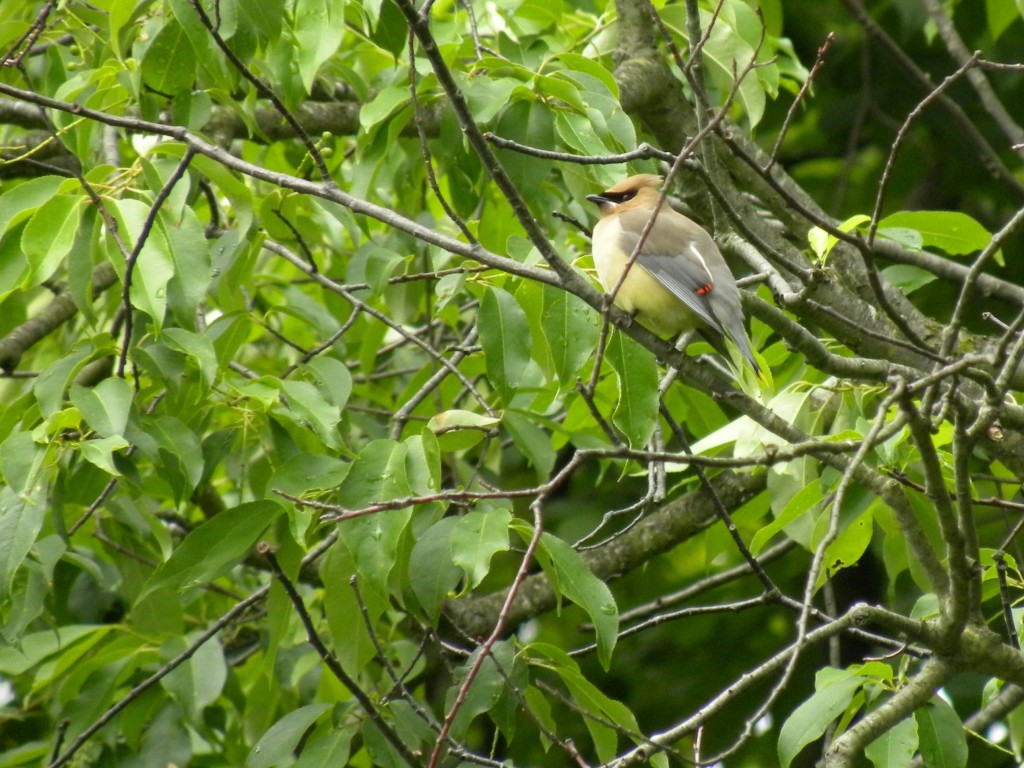July 3, 2012. I came across a large flock of Cedar Waxwings this morning. There must have been dozens of them all around me, they were hardly stopping still for a moment, flitting and feeding on insects or spiders found in the lower shrub layer of a mature hardwood forest. Few birds are as elegant as the Cedar Waxwing: their velvety cinnamon-grey plumage, a precise black mask, an official-looking yellow tail band and for some of them scarlet waxen wing spots, all make this one of our nattiest dressers.

I was puzzled by a couple of things though.
It seemed unusual for waxwings to be feeding so happily on insects, I’d always viewed them as eaters of tree fruit like rose hips, cedar berries and crab apples. Roving flocks of waxwings wander around all fall and winter stripping trees bare of their berry and seed crops, then moving on in fast-moving but straggly flocks to the next opportunity. A bit of easy research confirmed that insects do indeed form a staple part of their spring and summer diet, it makes sense because sooner or later last year’s fruit crop will run out. Nothing wrong with an omnivorous diet and it probably helps that a carnivorous component is digested quickly; a short route to energy.
I remain a little baffled that I met up with a flock in this the start of the Cedar Waxwing’s high summer breeding season. I would have expected them to break up into breeding pairs. Waxwings breed later than most other songbirds, it places them at the nutritional advantage of having an abundant supply of summer’s new seeds and berries available just when they’re feeding their brood. This was a flock of mature males and females, so perhaps it’s a little early yet. I’ll tuck this little puzzler away and one day it will all make sense.
The purpose of today’s walk was to see if there were any early southbound shorebird migrants to be found on some nearby mudflats. There weren’t. The natural world gave the appearance of being at peace with itself, although in reality it probably wasn’t – and never is. With young-of-the-year to be fed and defended, one mother’s young is another creature’s meal ticket; all the way up the food chain. A Great Blue Heron stalked around for a while, then flew away heavily, perhaps bored. Three or four Killdeer skittered around and looked anxious; but then they always do, and a huddle of moulting Mallards pulled themselves back into the cattail margins. Most of the male Mallards are now in ‘eclipse’ plumage, an intermediate stage when they become look-alikes to the all-brown females, before returning to full splendour in October.